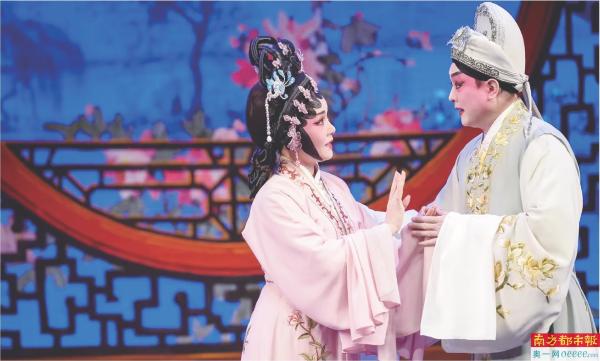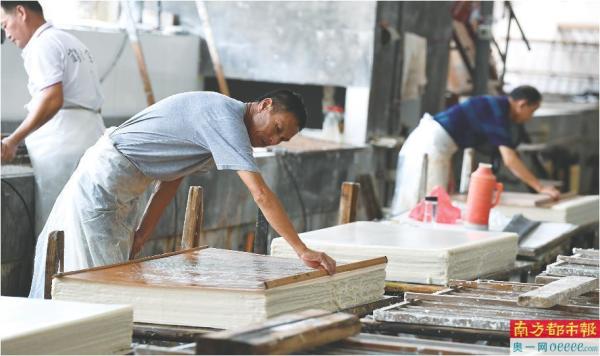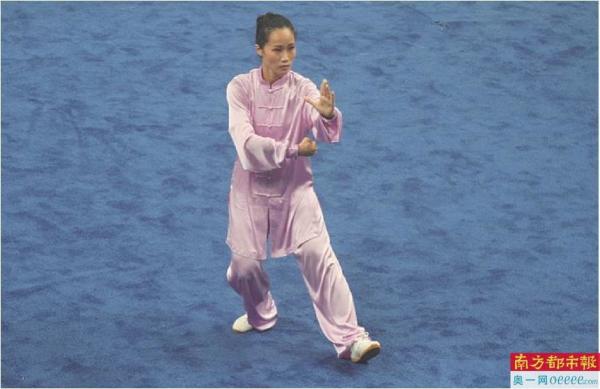Original title:43 items of "non-legacy of human beings" in movable type printing of Cantonese opera, Kunqu opera and China tea came from China.
China’s intangible cultural heritage list and roster rank first in the world, including wooden arch bridge construction, abacus calculation, acupuncture and so on.
A few days ago, China declared "China traditional tea-making skills and related customs" as a representative list of UNESCO’s intangible cultural heritage of mankind. So far, 43 projects in China have been listed in UNESCO’s intangible cultural heritage list, ranking first in the world. What are the 43 "human heritages" made in China? What’s their history?

1. Guqin Art (listed in 2008)
Chinese guqin is one of the oldest plucked instruments in the world, which is mainly pronounced by string and wood resonators. It has a history of more than 3,000 years.

2. Kunqu Opera (listed in 2008)
Kunqu Opera, formerly known as "Kunshan Opera" or "Kunqu Opera" for short, originated more than 600 years ago. Many plays of Kunqu Opera, such as Peony Pavilion, Palace of Eternal Life and Peach Blossom Fan, are immortal works in ancient opera literature.
3. Mongolian long-tune folk songs (listed in 2008 [China and Mongolia jointly declared])
Mongolian long-tune folk songs are the traditional music of Inner Mongolia Autonomous Region, and are known as "the living fossil of grassland music". The representative tracks include Walking Horse, Little Huang Ma, Vast Grassland, Vast and Rich Alashan and so on.
4. Xinjiang Uygur Muqam Art (listed in 2008)
Xinjiang Uyghur Muqam art is a large-scale comprehensive classical music art form that combines singing, dancing and music. There are a series of divertimentos with regional characteristics, such as Hami Muqam, Hotan Muqam, Daolang Muqam and Ili Muqam.
5. Year of Qiang (included in 2009)
The Year of the Qiang is a traditional festival popular in the Qiang people’s settlements in Li County, Mao County, Wenchuan County and Beichuan Qiang Autonomous County of Sichuan Province. Celebrations are held every year on the first day of the tenth lunar month, usually for 3-5 days.
6. Traditional construction techniques of wooden arch bridge in China (listed in 2009)
Wooden arch bridge is a high-tech category of traditional wooden bridges in China, and it is also the only category in the history of bridges in the world. It is mainly distributed in Zhejiang and Fujian in China, and its core technology is to build arch frames.
7. Traditional spinning, dyeing, weaving and embroidery skills of Li nationality (listed in 2009)
The traditional spinning, dyeing, weaving and embroidery technique of Li nationality is a kind of textile technique created by Li nationality women in Hainan Province, which integrates spinning, dyeing, weaving and embroidery. There are more than 160 kinds of brocade patterns, mainly figures, animals and plants.
8. Seal cutting in China (listed in 2009)
China seal cutting is a unique engraving art with stone as the main material, carving knife as the tool and Chinese characters as the representation. It has a history of more than 3,000 years.
9. Engraving printing skills in China (listed in 2009)
Engraving printing technology is a special technology that uses a knife to carve characters or patterns on a wooden board, and then uses ink, paper, silk and other materials to print and bind books. It has a history of more than 1,300 years, which has created a precedent for human copying technology.
10. China Calligraphy (listed in 2009)
With the emergence and evolution of Chinese characters, China’s calligraphy has developed. After more than 3,000 years, it has become a representative symbol of China culture. It has evolved from Oracle Bone Inscriptions, Shi Guwen and Jinwen (Zhong Dingwen) to Dazhuan, Xiaozhuan, Lishu, cursive script, regular script and running script.
11. Chinese paper-cutting (listed in 2009)
Chinese paper-cutting can be divided into three categories: monochrome paper-cutting, color paper-cutting and three-dimensional paper-cutting. Under each category, there are many sub-categories, which are rich in form and highly decorative.
12. China traditional wooden building construction skills (listed in 2009)
China traditional wooden structure building construction technology is a building construction technology system with wood as the main building material, tenon and mortise as the main combination method, and modulus system as the scale design and processing production means.
13. craftsmanship of nanjing yunjin brocade (included in 2009)
Craftsmanship of nanjing yunjin brocade applied core technologies such as "warping and weft breaking" to large looms with complicated structures, and two people manually operated them to weave luxurious fabrics, such as robes, from silk thread, gold thread and peacock feather thread.
14. Dragon Boat Festival (listed in 2009)
Dragon Boat Festival is a traditional festival in China. There are many legends about its origin, such as the commemoration of Quyuan’s throwing himself into the river, the taboo that began on May 5th, the training of the navy by Gou Jian, the King of Yue, and the commemoration of Wu Zixu’s throwing himself into Qiantang River and Cao E’s saving his father.
15. China Korean Agricultural Music Dance (listed in 2009)
China Korean agricultural music dance is a folk performing art which integrates performance, singing and dancing, reflecting the traditional farming production and life, offering sacrifices to pray for blessings and celebrating the harvest.
16. Gesar (in 2009)
The epic Gesa (Si ‘er), which has been sung for thousands of years, is spread among the Tibetan, Mongolian, Tu, Yugu, Naxi, Pumi and other ethnic groups on the Qinghai-Tibet Plateau in China. It tells the heroic achievements of King Gelsall in banishing evil spirits, restraining the strong and helping the weak, unifying the ministries, and finally returning to heaven.
17. Dong people’s big songs (listed in 2009)
Dong people’s big song, called "Ga Lao" in Dong language, is a distinctive folk song singing form of Dong people. The Song Dynasty was mature. In the Ming Dynasty, Kuang Lu clearly recorded the Dong people’s "Long song closed his eyes" in "Chiya".
18. Huaer (included in year 2009)
Hua ‘er is a folk song shared by the Han, Hui, Tibetan, Dongxiang, Bao ‘an, Salar, Tu and Yugu nationalities in the three provinces (regions) of northwest China. It was born in the early Ming Dynasty, and was named because the lyrics compared women to flowers, and it was sung in Chinese.
19. Manas (included in 2009)
Manas, a local traditional folk literature in Kizilsu Kirgiz Autonomous Prefecture, Xinjiang, describes the heroic Manas and his seven generations of descendants who fought against foreign invaders and various evil forces.
20. Mazu believes in customs (listed in 2009)
Mazu, formerly known as Lin Mo, was born on March 23rd in the first year of Jianlong in the Northern Song Dynasty (960) and died on September 9th, 987. Mazu’s belief in custom refers to Mazu’s belief and custom, which consists of three series: sacrificial ceremony, folk custom and stories and legends.
21. Mongolian Humai Singing Art (listed in 2009)
Humai is a magical singing art created by Mongolians: the singer sings two parts at the same time purely with his own vocal organs.
22. Nanyin (listed in 2009)
Nanyin, also called "Xianguan" and "Quanzhou Nanyin", is mainly composed of three categories: finger, score and qu, and it is a kind of music with rich and complete ancient music system in China.
23. Regong Art (listed in 2009)
Regong art, a traditional art among citizens in Tongren, Qinghai Province, originated in Huangnan Tibetan area in the 13th century, mainly referring to Thangka, murals, pile embroidery, sculpture and other painting plastic arts.
24. China Traditional Silk Weaving Skills (listed in 2009)
China’s traditional mulberry silk weaving techniques spread in Taihu Lake basin in northern Zhejiang and southern Jiangsu (including Hangzhou, Jiaxing, Huzhou and Suzhou) and Chengdu, Sichuan, including mulberry planting, sericulture, reeling, dyeing and silk weaving.
25. Tibetan Opera (listed in 2009)
Tibetan opera is a Tibetan drama with masks and songs and dances, which was formed in the 14th century and spread in the Qinghai-Tibet Plateau. Most of the contents are myths and legends in Buddhist scriptures to persuade good and punish evil.
26. Traditional firing techniques of Longquan celadon (listed in 2009)
The traditional firing technique of Longquan celadon has a history of more than 1700 years. The thick glazed porcelain of "pink-green" and "plum-green" fired in Longquan kiln is the expression of the aesthetic taste of China classical works.

27. Traditional production techniques of Xuan paper (listed in 2009)
Xuan paper is an outstanding representative of traditional handmade paper, which has the characteristics of soft texture, no decay and so on. There are 108 processes in the traditional production technology of Xuan paper, which have strict requirements on water quality, raw material preparation, equipment production and process control.
28. Drum Music in Xi ‘an (listed in 2009)
Drum music in Xi ‘an, spread in Xi ‘an (ancient Chang ‘an) and surrounding areas, flowed into the people with the exile of court musicians during the Anshi Rebellion. Representative repertoires include Drum Pieces, Dazazi, Quotations, Formulas, Nanci, Qupo and Zaqu.
29. Cantonese Opera (listed in 2009)
Cantonese Opera, also known as Guangfu Opera and Guangdong Opera, is the largest opera in Guangdong and Guangxi Cantonese dialect areas. Originated in Foshan and sung in Cantonese dialect, it is one of the traditional operas of the Han nationality. Cantonese Opera was formed in Guangdong, and then spread to Guangxi, Hongkong, Macau and Taiwan Province. Cantonese Opera was performed in Southeast Asia and American countries where overseas Chinese lived.
30. Masire (included in year 2010)
Maixi Refu is the most important bearer of the cultural tradition of the Uygur people. The complete activities of Maixi Refu include a series of rich customs and performing arts, such as music, dance, drama, folk art, acrobatics, oral literature, diet and games.
31. Manufacturing Technology of China Watertight Compartment Fortune Boat (listed in 2010)
The manufacturing technology of watertight compartment is developed in Fujian province, which makes it possible to build seagoing vessels with watertight compartments, mainly made of camphor wood, pine wood and Chinese fir, and assembled by using traditional carpenter’s tools.
32. Chinese movable type printing (listed in 2010)
China’s wood movable type printing is one of the oldest printing technologies in the world, and Ruian, Zhejiang Province has maintained this technology, where it is still used to compile genealogy.
33. Acupuncture in China (listed in 2010)
For thousands of years, people have used metal needles or moxa cones to inject needles into specific parts of the human body to treat diseases and relieve pain, and thus established a unique theory of human meridian acupoints, which has become a wonderful work of China medicine.
34. Peking Opera (listed in 2010)
Beijing opera is a performing art that combines singing, reading, doing and playing. Peking Opera is regarded as the epitome of the aesthetic ideal of traditional Chinese opera in China.
35. Imakan of Hezhe nationality (listed in 2011)
Imakan, a Hezhe nationality, is a folk art storytelling form of Hezhe nationality, which is popular in Hezhe nationality inhabited areas in Heilongjiang Province. Representative works include Shirdaru Mo Rigen, Mangemu Mo Rigen and so on.
36. Chinese Shadow Play (listed in 2011)
Chinese shadow play is a kind of drama form with colorful shadow puppets made of leather or paper, which is performed with music and singing. It is mainly performed in entertainment or religious ceremonies, weddings, funerals and other special occasions.
37. Fujian Puppet Show Successor Training Plan (listed in 2012)
Fujian puppet show is an outstanding representative of puppet performance art in China. Since 2006, relevant communities, groups and representative inheritors have focused on the main goal of cultivating inheritors.
38. China abacus (included in the year 2013)
Abacus calculation is a method of digital calculation with abacus as a tool. After the Ming Dynasty, China’s abacus first spread to Japan, Korea, Southeast Asian countries, and gradually became popular in America in recent years.
39. Twenty-four solar terms (included in year 2016)
Twenty-four solar terms originated in the Yellow River Basin. As far back as the Spring and Autumn Period, the ancient sages of China set four solar terms, such as mid-spring, mid-summer, mid-autumn and mid-winter, which were continuously improved and perfected. By the Qin and Han Dynasties, the twenty-four solar terms had been completely established.
40. Tibetan medicine bath method (listed in 2018)
Tibetan medicine bath method, called "soaking" in Tibetan, is the Tibetan people’s view of life based on the five sources of earth, water, fire, wind and air, as well as the health and disease views of Long, Chiba and Bacon, and they adjust their physical and mental balance by bathing in natural hot springs or water juice or steam boiled by medicine.

41. Tai Ji Chuan (included in year 2020)
Tai Ji Chuan pays attention to mental cultivation and breathing adjustment, with five steps and eight methods as the core movements, and routines, exercises and pushing hands as the forms of movement.
42. Send the King Ship (included in the year 2020, China and Malaysia jointly declare)
With a history of more than 600 years, the King-sending Boat is a disaster relief ceremony widely spread in Minnan, China and Malacca, Malaysia.
43. Traditional tea-making techniques and related customs in China (listed in 2022)
China’s traditional tea-making skills and related customs are knowledge, skills and practices related to tea garden management, tea picking, hand-made tea, and tea drinking and sharing.
Written by: Southern Reporter Zhou Peiwen Intern Huang Peilin
Photo: Southern Reporter Liu Shihao Xinhua News Agency
关于作者